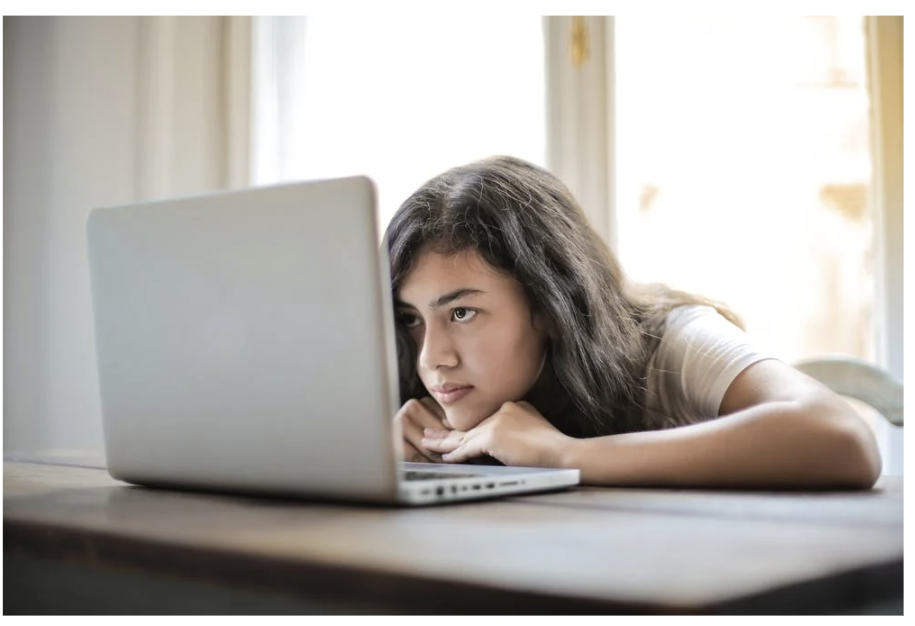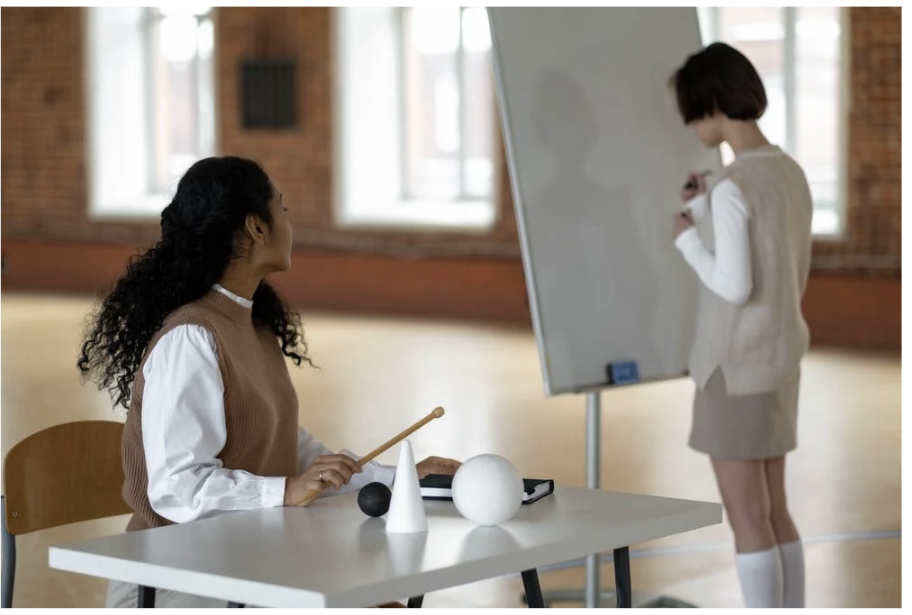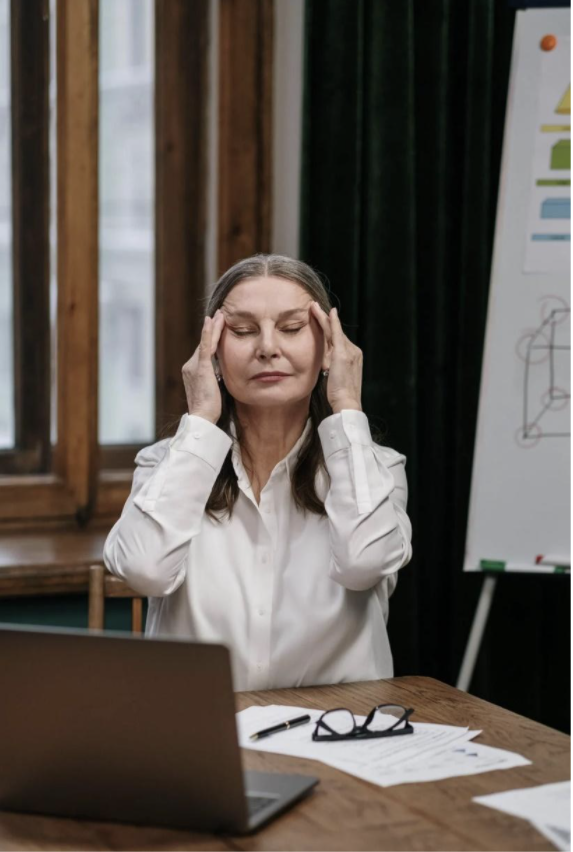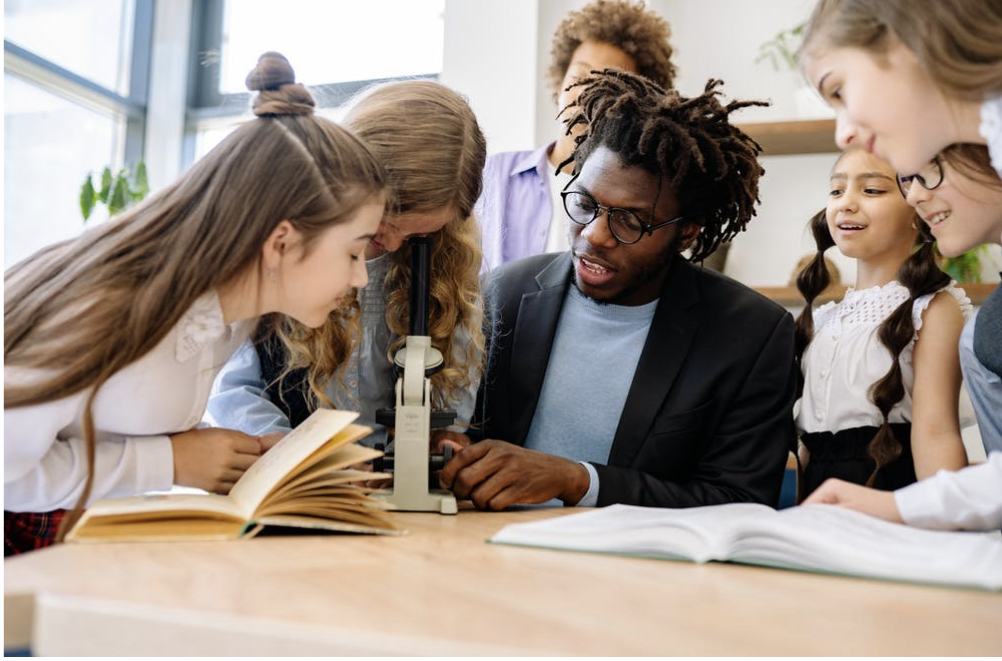Building Elementary School Student-Teacher Relationships
Quinn Karasek, Tristan Arsenault-Carter, Jade Johnston and Taylor Gauci
Please cite this page as:
Arsenault-Carter, T., Gauci, T., Karasek, Q., & Johnston, J. (2022, April 1). Building Elementary School student-teacher relationships. Classroom Practice in 2022. Retrieved [date], from https://ecampusontario.pressbooks.pub/educ5202/chapter/building-elementary-school-student-teacher-relationships/
Introduction
Student-teacher relationships are an important part of the classroom dynamics and environment. The relationship between student and teacher can be either positive or negative and have effects on students’ overall well-being, social and emotional development, and academic achievements (Crosnoe et al., 2004; García-Moya, 2020; Hershkovitz, 2018). Many different facets can affect the relationship between a student and teacher, including attachment styles, power struggle, different teaching styles, and feelings of trust and care (Chamberlain et al., 2020; Crosnoe et al., 2004; Hershkovitz, 2018). When positive student-teacher relationships are made, there are benefits for both the student and the teacher. These positive relationships can promote students’ overall feeling of safety, well-being, and sense of belonging, positively affecting students’ academic outcomes (Hershkovitz, 2018). The positive relationship a teacher may have with a student can also benefit the teacher as it has been shown to improve the teachers’ well-being and professional development (Hershkovitz, 2018). Student-teacher relationships are a driving force within the classroom and can impact both in either beneficial and/or detrimental ways. This paper will begin by addressing student teacher relationships in the classroom and will discuss the challenges that come about when forming these relationships, strategies to overcome said challenges, and the opportunities that can arise from creating positive student-teacher relationships.

Student-Teacher Relationships Within the Classroom
Creating strong positive student-teacher relationships will not improve students’ academic achievements alone, but will provide students a greater opportunity to be successful. This positive relationship provides students with the confidence to speak to the teacher, ask questions, and receive guidance from the teacher, which will help students academically (García-Moya, 2020; Rimm-Kaufman & Sandilos, 2010). Teachers can begin to build positive relationships with students by knowing their interests; this can be shown by talking to students about said interests or by including them within the lessons or assignments (García-Moya, 2020; Rimm-Kaufman & Sandilos, 2010). An example of this would be if a student is interested in swimming, it could be beneficial to the students learning if the lesson included a math question on swimming the length of the pool. Some other ways a teacher can build positive relationships with students is by getting to know each student individually, creating one-on-one time for each student, understanding students’ temperaments, providing meaningful feedback, creating a positive classroom environment, and being respectful to students (García-Moya, 2020; Rimm-Kaufman & Sandilos, 2010).
Another aspect to consider that can affect student-teacher relationships is the increase of online learning due to the global COVID-19 pandemic. Online learning not only makes it increasingly difficult for meaningful student-teacher relationships to form, but it also presents challenges such as a lack of student motivation and engagement and a change in the way educators teach their daily lessons. Hershkovitz (2018) discussed how when teachers are in the classroom, they will often choose students of lower academics to answer questions as a way to motivate them. However, while being online, the teachers were more likely to select students of higher academic success.

Challenges Presented When Building Student-Teacher Relationships
Building student-teacher relationships is not always straightforward as many challenges may occur along the way. The first challenge associated with student-teacher relationships is a power struggle that is often formed between teachers and their students. Many teachers defend their authority and credibility in their classroom without regard for how it may affect their students (García-Moya, 2020). This causes an inappropriate attempt to seek control of the students solely because of their titled role (Twemlow, Fonagy, Sacco, & Brethour, 2006). This power struggle is difficult for the students as they feel incompetent, not valued, and have no control over their actions (García-Moya, 2020). A classroom with a strong power struggle can also lead to bullying. Twemlow (2006) defines teacher bullying as “using power to punish, manipulate, or disparage a student beyond what would be a reasonable disciplinary procedure” (p.10). When teachers execute bullying, students lose trust and reassurance in these teachers, making it increasingly challenging to form positive student-teacher relationships (Twemlow, Fonagy, Sacco, & Brethour, 2006).

Another challenge that may occur while attempting to form positive student-teacher relationships is respecting and demonstrating appropriate student-teacher boundaries. To gain acceptance and approval from students, teachers may become too friendly or familiar with their students instead (Eduflow, 2014). They may begin to consider students as peers, provide them with too much latitude, or even adopt some forms of student behaviour (Eduflow, 2014). These relationships are often inappropriate and counterproductive (Eduflow, 2014).
The next challenge found when creating student-teacher relationships is the lack of professional development opportunities for teachers. Teachers are not provided with opportunities to build a strong understanding of how to meet the needs of all their students in order to build strong relationships (Pianta et al., 2012). Not all students respond the same way to lessons, requiring personalized educational practices. This lack of awareness leads to increased difficulty connecting with students and, in turn, poor student-teacher relationships (Eduflow, 2014). Without proper training and support, it can be challenging for teachers to understand how to develop these relationships fully. Furthermore, this increases teachers’ time and effort to develop these relationships. Teachers are challenged with discovering ways to make connections and build a strong positive relationship with each student on their own (García-Moya, 2020). Without professional development opportunities, teachers are left to use their own time and energy to find strategies that work in the classroom to better improve student-teacher relationships.

The final challenge discussed when building student-teacher relationships is when students are detached from the relationship (Brinkworth et al., 2018). Students may simply not like their teachers or are uninterested in them, causing students to show disrespect or ignore classroom expectations which contribute to a strained relationship (Brinkworth et al., 2018). Students may not want to build relationships with their teacher due to poor interactions, a sense of favoritism, poor academic grades, or that they do not want to ruin their reputation (Brinkworth et al., 2018). Students may also become detached because of an unresolved conflict between the student and the teacher or past experiences the student had. It is challenging to build a strong connection if there is an ongoing unresolved conflict or a broken bond that has occurred. Students who have had poor experiences with adults in the past can also have a hard time trusting teachers, resulting in unwanted classroom behaviours and minimal interactions with their teachers (Pianta et al., 2012). These behaviours often make it hard for teachers and students to understand each other and connect. Personality, family backgrounds, thought processes, learning styles, priorities, maturity levels, and academic goals influence each student’s ability to connect and want to build a relationship with a teacher.
Strategies to Overcome Found Challenges
Turning to look at how educators can buffer the effects associated with an imbalance of power in the classroom, Chamberlain et al. (2020) suggest that providing students with a sense of autonomy can make a significant improvement in student-teacher relationships. When teachers present themselves as the sole enforcer of rules, norms, and consequences, students feel less motivated and responsible for sharing ownership for said expectations and consequences, which can lead to student-teacher conflict (Chamberlain et al., 2020). To overcome this barrier to positive student-teacher relationships, teachers must reflect on their use of power in the classroom and understand how it affects their relationships with their students. From there, the teacher must begin to include students in the planning of their learning by allowing them a hand in creating classroom expectations, tailoring learning to student interests, and providing choice in how they learn and how they show their understanding. With this shared power between the student and their educator, a more equitable, collaborative environment is formed, and both parties benefit from a stronger, more positive relationship (Chamberlain et al., 2020).

When looking at viable solutions for respecting the boundaries between students and teachers while forming a meaningful relationship, it is essential to recognize that students express the need to be acknowledged and interacted with on a personal level that goes far beyond simply addressing the class collectively or solely focusing on curriculum objectives. As noted by Garcia-Moya (2020): Teaching is a relational practice, and instruction and relationship building are not only related but tend to be experienced as a whole. Therefore, despite the general view of professionalism as involving formal and impersonal relationships … a formal or neutral style of interaction in teaching actually seems to detract from the ultimate goal of teaching: students’ positive development. (p.57)
While saying this, it is also important to clarify that forming a meaningful relationship with the student does not need to involve knowing in-depth details of their personal lives or inappropriate levels of intimacy. Instead, teachers should take an interest in the student’s passions, dislikes, opinions, learning styles, etc., while being aware of what is appropriate behaviour for their role as an educator.
Turning to a lack of developmental opportunities that support teachers in achieving positive student-teacher relationships, this lack of development also impacts a teacher’s ability to recognize and teach to all student needs and increases the amount of time and effort put on the teacher. When looking to pose solutions for this barrier, it is again necessary to stress the importance of positive student-teacher relationships on the wellbeing of both parties, making the extra time and effort put forth by the teacher worth the expense. When looking at developmental opportunities that would be beneficial to student-teacher relationships, reoccurring workshops focusing on Autonomy-Supportive Teaching would help teachers be more informed on building an ideal and meaningful student-teacher relationship (Reeve & Shin, 2020). During these Autonomy-Supportive Teaching workshops, teachers will learn how to support student autonomy, encourage autonomous motivation, and spark student engagement – all factors that improve student-teacher relationships by moving “students toward a higher-quality motivation and engagement and the teacher toward a higher-quality motivating style” (Deci et al., 2006, as cited in Reeve & Shinn, 2020, p.157).
Finally, when looking at solutions for improving student-teacher relationships when students are not interested due to unresolved conflict and negative past experiences with teacher relationships, it is imperative for the teacher to acknowledge the effects that this could have had on the student and their ability to form new relationships or to trust other teachers. When looking to overcome these barriers, a study focusing on student-teacher relationships in schools by García-Moya (2020) notes that:
Students valued teachers who showed their human side through small day-to-day interactions, such as sharing personal anecdotes during lessons, chatting informally with students about the weekend, music, sport, or similar topics at the beginning or end of the class, as well as making jokes and showing a sense of humor. (p.53)
Understanding this, it is clear that most students want a relationship with their teacher when their teacher makes themselves presentable and enjoyable. García-Moya (2020) notes that when looking to support these positive interactions during class, teachers should look to incorporate social-emotional learning into the curriculum through overarching concepts such as cooperation, assertation, responsibility, empathy, and self-control. These can be incorporated through activities such as morning meetings, role-playing, reading books that include conflict that relates to students’ lives, etc., and by doing this, teachers will show to students that they value their learning, opinions, feelings, and their relationship.
Addressing the Opportunities Presented from Creating Positive Student-Teacher Relationships
Many opportunities can stem from building positive student-teacher relationships that will benefit both students and the teacher. First, looking at how students and teachers engage throughout their interactions can lead to further opportunities in the relationship both in and outside the classroom. Pianta et al. (2012) discusses when students and teachers build healthy and positive relationships within the classroom it can aid in promoting overall healthy well-being and allows them to engage and grow together in many areas of development. Student-teacher engagement takes into account the classroom environment, the interests and opinions of both the teacher and the students and promotes valuing all perspectives in the classroom. As mentioned previously, these different facets can play a role in determining what types of opportunities will become available to the student and teacher based on their engagement with one another.
From this, positive engagement can provide students with opportunities to enhance their overall well-being and can aid in improving academics. McCallum (2010), highlighted that when relationships are built in a healthy and effective way this can provide both students and teachers with a positive environment that is beneficial to the students social and emotional development. Having these positive relationships can explain the importance of well-being for teachers and students. Contextualizing this positive sense of well-being among teachers allows for reflection of their relationships with their students and includes learning opportunities for students that promote emotional and social health, thus leaning towards more positive well-being overall. McCallum (2010) also addresses the idea that both social and emotional development are connected in a learning environment. The connection between both areas of development demonstrates a need for balance in the classroom with teaching strategies, activities, and opportunities for students to learn and grow that meet both social and emotional needs of the students.

Next in building student-teacher relationships, many teachers make an effort to bring the students’ interests and ideas into the classroom. This provides students with the opportunity to have a voice within the school. Increasing the voice of students and providing opportunities for the students to contribute to their learning can be beneficial in creating a positive bond between the student and the teacher. Increasing student voice within the classroom can be very beneficial to building positive healthy relationships as this allows students to feel heard by their teacher and shows students that their perspectives and ideas are valued in their education. This idea of incorporating student voice will increase the bond teachers have with their students (Mitra, 2003). When students have a voice within their education it helps to engage their learning more effectively, connect with their peers and teacher, and also provides students with the opportunity to gain a sense of their academic skills and abilities in the classroom. Mitra (2003), discusses the idea that when teachers provide students with opportunities to share their voice this allows for stronger student-teacher connections. It also allows for opportunity regarding promoting a successful strategy of both student focused learning and a teacher focused approach in an organized way.
Another opportunity presented looks at reflective practice for teachers. With remote online learning, many students struggle engaging with their peers and to find that connection with their teacher. Reflective practice by the teachers allows students to identify what steps they can take to ensure that the connection barrier is lifted. With barriers to building positive student-teacher relationships, teachers can use their reflective practice strategies to implement ways in which students can still feel connected to the teacher virtually. Martin (2020), highlights the importance of communication with students when teaching through an online platform. Teachers can do this by providing students with a variety of ways they can communicate such as email, video, blogging, or talking with students using digital platforms. When teachers provide connected instruction in online learning environments for students, it provides opportunities for teachers to:
Maintain connectedness with students in the ordinary course of learning—including online learning. This approach to teaching shows how educators can connect to students emotionally, presenting content that meets the student’s needs, abilities, and interests, and finally, the course load of information provided to students. (Martin, 2020, p.2)
When teachers incorporate reflective practice into their teaching, this can aid in improving their teaching practice, teaching methods, and ways in which they can grow professionally. Reflecting allows the teacher to ensure the proper steps are taken to be the best teacher they can be for their students. Doing this allows the teacher to promote a positive environment for themselves and their students, which can lead to a stronger and more positive relationship between students and teachers.
Conclusion
To conclude, student-teacher relationships are a driving force in the formation of the classroom environment as well as the success and enjoyment of both the student and the teacher. In saying this, forming meaningful, positive student-teacher relationships seems to be a struggle for many students and educators (García-Moya, 2020). This paper has outlined the objectives and components of student-teacher relationships and common challenges attached to forming positive student-teacher relationships in the classroom. Strategies are suggested to overcome these challenges, and beneficial opportunities that can stem from said relationships are presented. In all, it is clear that although demanding, working towards building positive student-teacher relationships within the classroom will be beneficial for both the student and the teacher.
References
Brinkworth, M. E., McIntyre, J., Juraschek, A. D., & Gehlbach, H. (2018). Teacher-student relationships: The positives and negatives of assessing both perspectives. Journal of Applied Developmental Psychology, 55, 24-38.
Chamberlain, R., Scales, P. C., & Sethi, J. (2020). Competing discourses of power in teachers’ stories of challenging relationships with students. Power and Education, 12(2), 139–156. https://doi.org/10.1177/1757743820931118
Crosnoe, R., Johnson, M. K., & Elder Jr, G. H. (2004). Intergenerational bonding in school: The behavioral and contextual correlates of student-teacher relationships. Sociology of education, 77(1), 60-81.
Eduflow. (2014, May 6). Negative teacher-student relationships. https://eduflow.wordpress.com/2014/05/06/negative-teacher-student-relationships/
Englehart, J. M. (2009). Teacher–student interaction. In International handbook of research on teachers and teaching, (pp. 711-722). Springer, Boston, MA.
García-Moya, I. (2020). The Central Attributes of Connectedness with Teachers from the Students’ Perspectives. In García-Moya, The Importance of Connectedness in Student-Teacher Relationships (pp. 45–63). Palgrave Pivot, Cham. https://doi.org/10.1007/978-3-030-43446 5_3
Hershkovitz, A. (2018). The student-teacher relationship in the one-to-one computing classroom. Páginas de educación, 11(1), 37-65.
Martin, A. (2020). How to optimize online learning in the age of coronavirus (COVID-19): A 5-point guide for educators. UNSW Newsroom, 53(9), 1-30.
McCallum, F., & Price, D. (2010). Well teachers, well students. The Journal of Student Wellbeing, 4(1), 19-34.
Mitra, D. (2003). Student Voice in school reform: Reframing student-teacher Relationships. Retrieved from: https://mje.mcgill.ca/article/download/8686/6629/0
Pianta, R. C., Hamre, B. K., & Allen, J. P. (2012). Teacher-student relationships and engagement: Conceptualizing, measuring, and improving the capacity of classroom interactions. In Handbook of research on student engagement (pp. 365-386). Springer, Boston, MA.
Reeve, J. & Shin, S. H. (2020). How teachers can support students’ agentic engagement. Theory into Practice, 59(2), 150–161. https://doi.org/10.1080/00405841.2019.1702451
Rimm-Kaufman, S., Sandilos, L. (2010). Improving students’ relationships with teachers to provide essential supports for learning: Positive relationships can also help students develop socially. American Psychology Association. https://www.apa.org/education- career/k12/relationships
Twemlow, S. W., Fonagy, P., Sacco, F. C., & Brethour Jr, J. R. (2006). Teachers who bully students: A hidden trauma. International journal of social psychiatry, 52(3), 187-198.
Twemlow, S. W., Fonagy, P., Sacco, F. C., & Brethour Jr, J. R. (2006). Teachers who bully students: A hidden trauma. International journal of social psychiatry, 52(3), 187-198.
Waterford. (2019, April 29). Why strong teacher relationships lead to student engagement and a better school environment. https://www.waterford.org/education/teacher-student-relationships/

